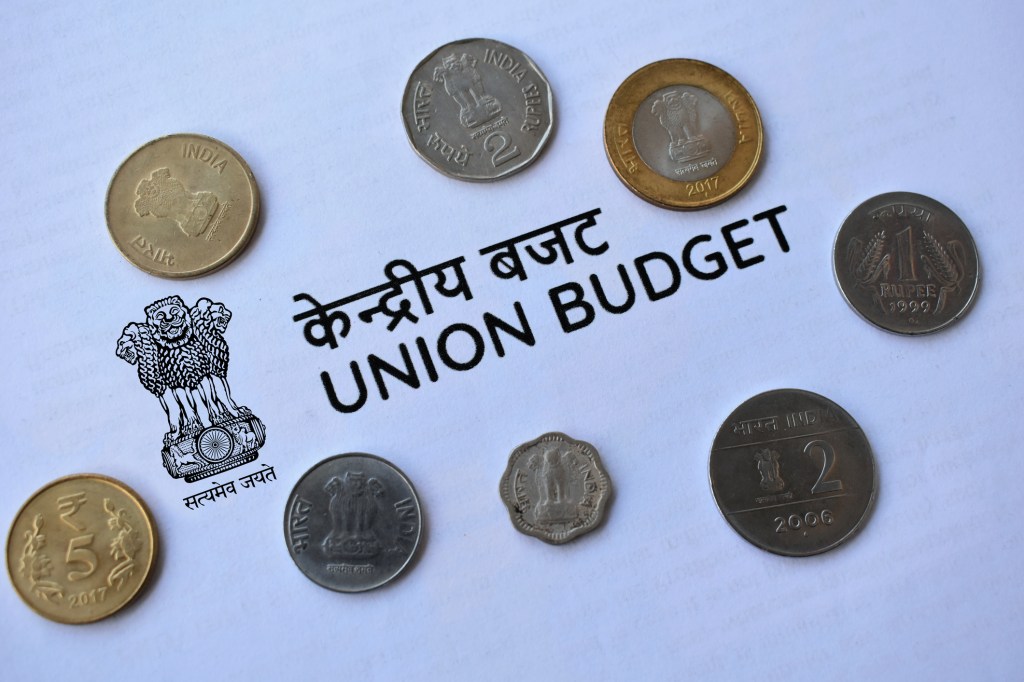Your 50-year-old uncle’s been holding off on big purchases, waiting to see what gets cheaper after India’s budget is presented by the finance minister on Saturday.
No pressure, Nirmala Sitharaman — there’s only about 1.5 billion Indian citizens to please. And you can count on a lot of them being glued to their screens come budget day, closely tracking any movement on everything from taxes to levies on goods.
Here’s what MONIIFY will be looking out for.
Any relief in sight?
Taxpayers are always calling for cuts, but the pressure’s really mounting this year — even corporates are lobbying for tax relief.
Why? Because it’ll fuel consumption, boosting sectors from real estate to autos to fast-moving consumer goods. Keep an eye on Hindustan Unilever, Dabur, and ITC when it comes to the latter, the likes of Tata Motors and Maruti Suzuki for cars and DLF or Macrotech Developers for real estate.
Notably, individuals contribute more tax revenue than corporations in India. Still, experts like Raghvendra Nath of Ladderup Wealth Management say we shouldn’t expect major tax overhauls.
The insurance industry wants a full GST waiver on health insurance, which could benefit players like Star Health. And while the markets welcomed capital gains tax cuts last year, the government offset it by raising the Securities Transaction Tax on futures and options.
Big on infrastructure
Infrastructure spending is a hallmark of any BJP budget. Capital expenditure has leaped from just over 10% of total spending to over 20% since the BJP took power, according to Emkay Global.
Every rupee spent here has a multiplier effect, boosting cement, steel, and job creation.
Last year’s $128 billion infrastructure splurge (3.4% of GDP) went into roads, irrigation, housing, industrial parks, and tourism.
Yet real spending lagged, slowing GDP growth and leaving many infra stocks with mixed returns. Larsen & Toubro, IRB Infra, and Ircon Ltd posted losses, while RVNL, KEC, and GMR Urban outperformed.
This year, expect the government to ramp up spending to make up for lost ground. Watch for last year’s underperformers to benefit.
Renewables: fully charged?
Last year’s budget allocated $25.5 billion to power and renewables, with funds directed at solar, pumped hydro, nuclear, and green hydrogen. The solar rooftop scheme was a standout success, sending solar stocks soaring.
Renewables accounted for 85% of new electricity generation capacity last year, and SBI Capital Markets sees a strong pipeline ahead. India aims for 500 GW of renewable energy by 2030, but is currently at 213 GW. Expect more spending on alternative fuels like hydrogen.
Trump’s anti-green stance has cooled the global sentiment around renewables, though, leading to a pullback in solar stocks. Still, India’s likely to stay the course.
Names to watch? Waaree Energies and Adani Green Energy are worth a look.
Less cheer for startups?
Founders and investors may walk away unimpressed, though. Many concessions they sought —mainly rationalization of taxes — were addressed in last year’s budget, and the government may wait for results before adding more.
Double taxation on employee stock options? Unlikely to be fixed, according to a VC insider. However, the $1.2 billion Fund of Funds scheme could get extended and broadened.
Last year saw targeted funds for biotech, space tech, agritech, and early-stage funding. Are we likely to be looking at more? Right now that’s uncertain.
More than buzzwords
With AI dominating headlines, expect the budget to push for R&D and financial sustainability.
India’s $1.2 billion national AI plan — covering sovereign cloud capacity and large-language model development — is already in motion, so updates on that front are likely.
As for hardware, a $3 billion incentive program for electronic components like circuit boards and battery cells is reportedly in the works. Unlike the broader Production Linked Incentive scheme, this will be more targeted to reduce imports.
Keep an eye out for new schemes, and the expansion of existing ones. Make in India and Digital India will continue to be key themes underpinning the policies.
The elephant in the room
With unemployment above 8%, job creation remains a sore spot. Last year’s budget announced internship schemes and employment-linked incentives, but their impact? Meh.
No major changes are expected on this front, although continued joblessness risks dragging down consumer spending and tax collections.
Edited by Thyagu Adinarayan and Tim Hume. If you have any tips, ideas or feedback, please get in touch: talk-to-us@moniify.com






